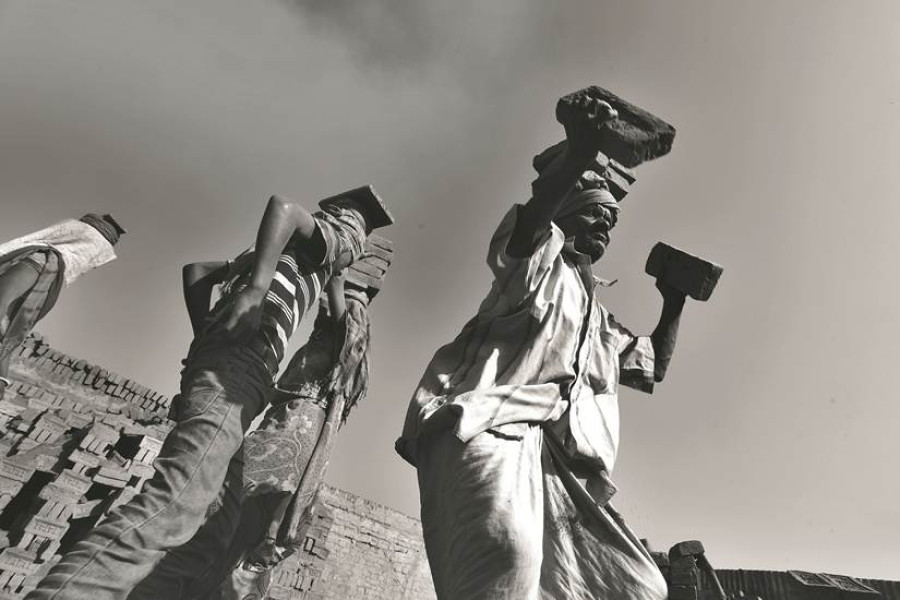Miscellaneous
Never enough
Trapped in a vicious cycle of debt, for migrant kiln-workers in Kathmandu, sheer hard work is never quite enough
Milan Poudel
Seventy-two year old Asart Paswan, a former wrestler from Ikmighat, India, has been working in brick kilns in Nepal for more than 20 years. He is a jolly old man, content with his small brick hut and his family—wife, a grandson, daughter and son-in-law.
“I earned Rs 300 last season,” Paswan says, unconcerned that there perhaps are a few zeros missing from the figure. He had a major accident last year, and the owners of the kiln he works in paid for his medical expenses. He is happy that he is still standing and can labour on with his family. Paswan’s family made a little over Rs 11,000 this season—meagre returns for six months of arduous labour and not enough to cover the debts the family has come to incur over time.
Brick is the primary building block for construction in most parts of Nepal, particularly the urban hubs. There are around 1,100 brick kilns in the country—one third of which operate in and around the Kathmandu valley. The kilns can produce as many as 50,000 bricks a day.
“A lot of hard work goes in making these bricks. It’s our blood and sweat,” says Bajrangi Paswan,from Durbanga, India. Hundreds of workers like Bajrangi migrate from India for the brick-making season which runs from December to June, when the rains set in.
Intermediaries (mukhiyas and nayekeys) contact these workers in India and offer financial incentives for them to hover around during the monsoon period—often with the lure of repaying debts incurred during their travel to Nepal. These intermediaries earn exponentially more then what other manual labourers earn.
“When they persuade us to come here, they claim how it’s all easy work. They treat us well, but once we’re here and start work, the cash starts flowing towards the owners,” Shreeram Paswan bemoans.
Shreeram and his three sons were persuaded to migrate to Nepal by his eldest son. The family now work side-by-side hauling bricks by the thousands each day. Shreeram’s 14-year-old son, Govinda Paswan, also works in the kilns, but doesn’t want to return to work next year. He
says would rather study in a school back home.
“They’re only paying Rs 105 per 1,000 bricks we carry. In other places, workers get upto Rs 120-130. It’s unfair,” Govinda laments. They worked in one of the kilns in Harisiddhi this season, but sheer hard work was never enough.
With high costs of living and low wages, most migrant kiln-workers are unable to payback their loans—compelling them to return season after season. If anybody wishes to leave, they’d need to clear their debts. Most fail to—entering a perennial Catch 22.
In recent years, human rights organisations have worked to bring these issues to light and the country has seen marked progress, particularly with regards to child labour in the kilns. But, those changes have yet to reach workers like Asart; for him and countless other kiln-workers, the plight continues and for now the struggle has no end in sight.
















 14.12°C Kathmandu
14.12°C Kathmandu










